#tiny moons: a year of eating in shanghai
Text
Cha chaan teng means ‘tea restaurant’ in Cantonese (cha canting in Mandarin) but these places are much more than that. There is one in Shanghai, hidden on a quiet street that splits off from chaotic Huahai Zhong Lu. The neon sign hanging in the window, “茶餐厅”, spills pink and green light onto the wet pavement. There is always a queue, and you will always have to share a small table with people you don’t know. The walls are a pale greenish-brown, with retro screens of yellow and blue glass tiles separating smokers from the non-smokers. It’s like stepping into Chungking Express, Wong Kar Wai’s film set in 1990s Hong Kong, with its cool palette of jade green and soft aquamarine. When I first saw the film I recognised the colours instantly, and the way the characters always seemed to be looking at each other through a haze of steam and city smog. At the back of the restaurant, where plates of food arrive clattering from the kitchen onto steel counters, the shelves are stacked with tins of condensed milk, Bovril, soup and packets of instant noodles. The menu is what you might call ‘Canto-Western’ or, as it’s known colloquially, ‘soy sauce Western food’. When Hong Kong was a British colony, cha chaan tengs emerged as a cheap option for those wanting Western food, which was usually only available at high-end restaurants. As a result, here are all the wondrous comfort foods of my childhood somehow listed on a single menu: fried noodles and fried rice, soy sauce chicken and roast goose, pork buns and fried wontons, along with spaghetti, macaroni, tinned soup, corned beef, sandwiches and toast of all kinds. Peanut butter toast, sugar toast, condensed milk toast, and Hong Kong-style deep-fried French toast.
—Nina Mingya Powles, Tiny Moons: A Year of Eating in Shanghai
41 notes
·
View notes
Text
Asian-White Book Recommendations
My father is French-Swiss while my mother is Singaporean-Chinese. I grew up in Singapore for the first 18 years of my life, and went to international schools the whole time. I had never thought about my heritages or cultures much (though I cannot tell if that's a product of being young or growing up in a place that understood my mix). When I moved overseas to Canada for university last year, I felt confronted by race and perceived differently by others for the first time. Everyone was mixed where I came from, but now none of my roommates had ever had a bubble tea or raclette in their lives.
Ever since then, I have been slowly reflecting on my identity. Over the course of the past year I have sought out and read books (both fiction and non-fiction) from other Asian/White mixed authors to help me understand myself and my feelings. Here, I have compiled a small list of the best books I have read so far dealing with being mixed.
Older Sister, Not Necessarily Related by Jenny Heijun Wills
Though not technically mixed, Wills is Korean but was adopted by a Canadian family and grew up in North America. Most chapters don't run for more than a couple pages and read almost like poetry with the lyrical and metaphoric language. Reuniting with her Korean parents as an adult, Wills details the painful emotions of feeling like you don't belong to either culture you are from -yet yearning to be accepted as a 'true' citizen of both.
Minor Feelings by Cathy Park Hong / The Loneliest Americans by Jay Caspian King
I am grouping these two memoirs together because of their similar topics and because I read them in close succession. Discussing being Asian-American, Hong and King also delve into the history of Asian immigrants in the United States and the community's evolution over the decades. I found the authors very angry and aggressive in their writing, but I have also not experienced the level of discrimination they have gone through as I grew up in Asia.
Parachutes by Kelly Yang
The only fiction book on this list, Yang tells the story Claire Wang who is sent from her home in Shanghai to attend a high school in the United States alone. Moving to Canada for university, I found myself relating to this YA novel a lot more than I had expected. How people around me treated me differently because I was an international student and the 'Crazy Rich Asian' lifestyle they assumed I have. The difficulty of trying to make friends with local students; finding myself gravitating to other Asian international students.
Small Bodies of Water / Tiny Moons: A Year of Eating in Shanghai by Nina Mingya Powles
Two books by the same author. Powles is the author I have enjoyed reading the most out of everyone on this list. She weaves her thoughts on being mixed (Chinese-Malay and New-Zealander) into stories exploring other themes: Small Bodies of Water is a collection of essays about her relationship with water, while Tiny Moons details the food she ate during her year abroad in Shanghai. Powles put into words my frustration at not being able to speak Chinese (my mother's language) while also celebrating the different cultures she comes from.
Seeing Ghosts by Kat Chow
Much more of an exploration of grief with Chow writing about her mother's death. This was the first book I read where the author also called her grandfather the same name I call mine - Gong Gong. A deeply moving book, it deals with Asian families; the hurt and love they give you.
If you have any recommendations for books on being mixed, please send them my way! I am especially looking for books that are about other countries than the United States (as I have found I relate less to Asian-American experiences than other Asian-White countries/cultures).
#asian#asia#book rec list#asian literature#book recommendations#english literature#literature#asian american#wasian#mixed race
4 notes
·
View notes
Quote
As we drive back down the mountain road we are sleepy from the heat, and so full from all the bananas. A tropical thunderstorm has started, so loud we can't hear ourselves speak, so we don't. It's warm and my skin is damp. I think I smell like the rainforest. Maybe my body of water is the rainforest or the whole city in the rain; maybe my rivers are all these small waterfalls. I can't see anything outside through the mist except occasional flashes of banana tree fields. I keep looking back until they disappear.
Nina Mingya Powles, Tiny Moons: A Year of Eating in Shanghai
59 notes
·
View notes
Text
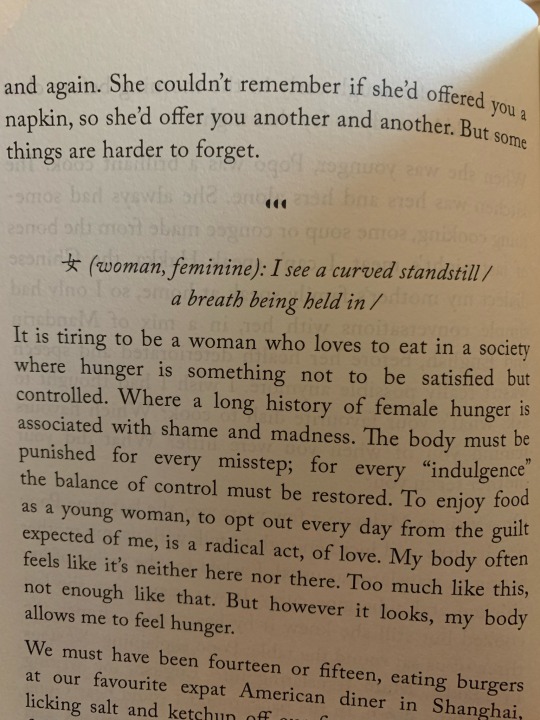
It is tiring to be a woman who loves to eat in a society where hunger is not something to be satisfied but to be controlled. Where a long history of female hunger is associated with shame and madness. The body must be punished for every misstep; for every “indulgence” the balance of control must be restored. To enjoy food as a young woman, to opt out every day from the guilt expected of me, is a radical act of love.
nina ming ya powles, tiny moons: a year of eating in shanghai, 2020
#quotes#food#food writing#anti diet#anti diet culture#tiny moons#Nina ming ya powles#Ed recovery#romanticising food#romanticising
71 notes
·
View notes
Text

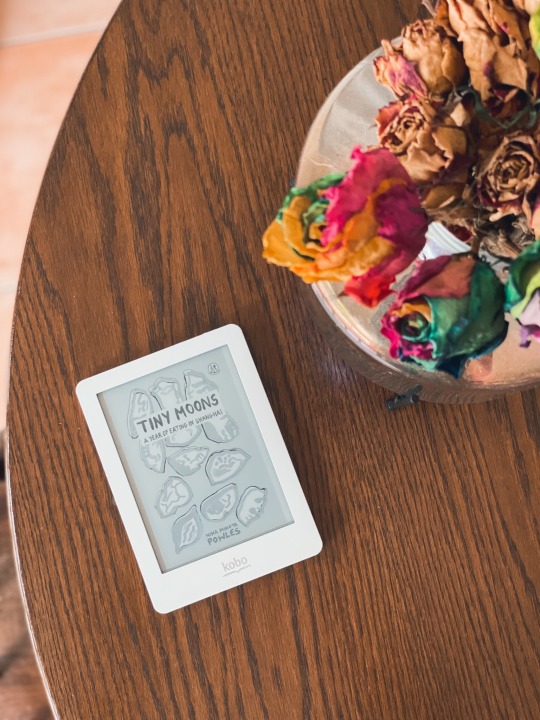
Tiny Moons: A Year of Eating in Shanghai by Nina Mingya Powles (2020)
A slim little book about the comfort of eating and learning to be alone. As the title suggests, we follow Mingya Powles through her study year in Shanghai. The chapters are categorised by the seasons and the foods she ate throughout them, accompanied by adorable illustrations. The writing is tangible, sensual in ways good food writing always is. This is a book to ignite the senses. Make sure you have some snacks nearby while reading 😂
24 notes
·
View notes
Note
12, 23, 65 for the book asks!
12. a book that mentions food in the cover
i'll have to go with tiny moons: a year of eating in shanghai! it has a beautiful cover and i want to read it one day (it hit me that crying in h mart also works for this book rec)
23. a book that is currently on your tbr
my tbr pile is huge right now lmao but ill recommend something that i haven't seen too many people pick up yet: must i go
65. a book that scared the crap out of you
american psycho was way more gory than i expected
book recs ask game / askbox
2 notes
·
View notes
Text
My favourite four books published and read in 2020

BOY PARTS BY ELIZA CLARK
Published by Influx Press
Truly like nothing I’ve ever read, Boy Parts is a completely original debut and one that compelled me, obsessively.
Irina photographs average looking men in compromising, often sexual positions. She’s witty, bitter and beautiful and the more you read, the more you find out about her, and the less you trust her. As she begins to re-discover repressed memories she becomes more and more self destructive, hurting all those around her.
Irina is nasty, mean and twisted and also strangely likeable too. I really found myself thinking about the novel all the time when I wasn’t reading it and finished the book swiftly. WIthout a doubt the best thing I read in 2020 and I’m excited to see what Eliza Clark writes next.
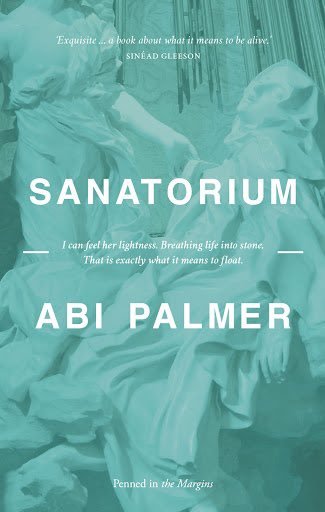
SANATORIUM BY ABI PALMER
Published by Penned in the Margins
I devoured Sanatorium in a single day, drinking in its beautiful, poetic prose, becoming desperate to get into water myself.
The story is completely surreal and follows the story of a young woman at a water rehabilitation centre in Budapest. It jumps back and forth between her time there and her return to London where she attempts to recreate the experience using an inflatable bath tub she buys online.
The story flowed so beautiful and left time to contemplate my own body and how lucky I am. Again, another incredibly original story, told in such a brilliant way.
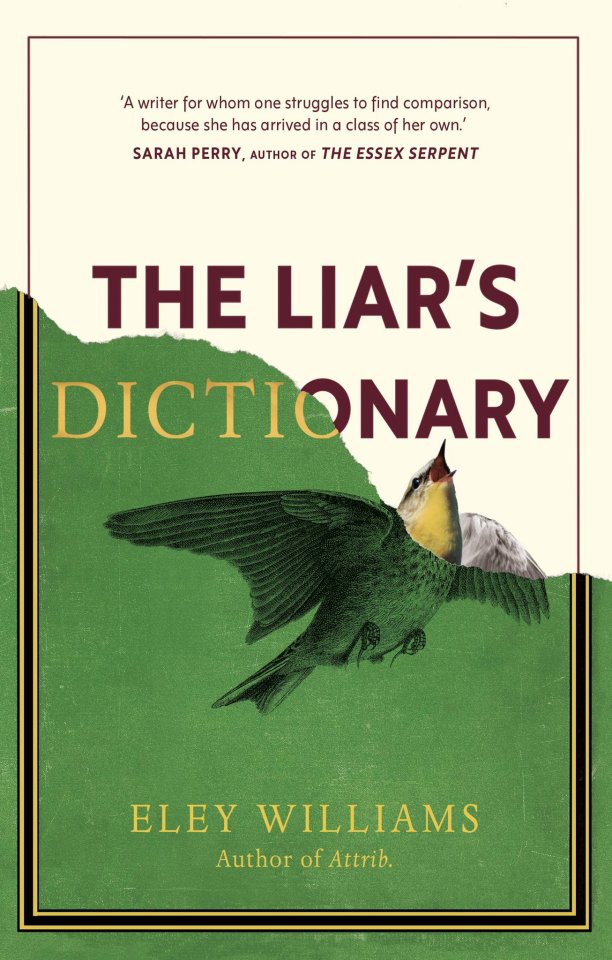
THE LIARS DICTIONARY BY ELEY WILLIAMS
Published by William Collins
The Liar’s Dictionary was my most anticipated read of 2020. Eley William’s is a terrific writer and I enjoyed her debut short story collection Attrib. (published by Influx) immensely.
The story follows Peter Winceworth in late 19th century, as, disillusioned from his job at Swansby’s New Encylopaedic Dictionary, he begins writing fake entries in the dictionary. It switches between him and Mallory who, every day while interning at the same Dictionary, she fields threatening phone calls from an unknown man. Mallory is forced to check through the Dictionary entries, looking for Peter’s false word, as their lives begin to entwine.
To give away any more would be unforgivable but I truly encourage everyone to give this a go. There are specific scenes (one involving a pelican and a fountain pen and another an ice cream van) that will stay with me for ages. A really enjoyable read.
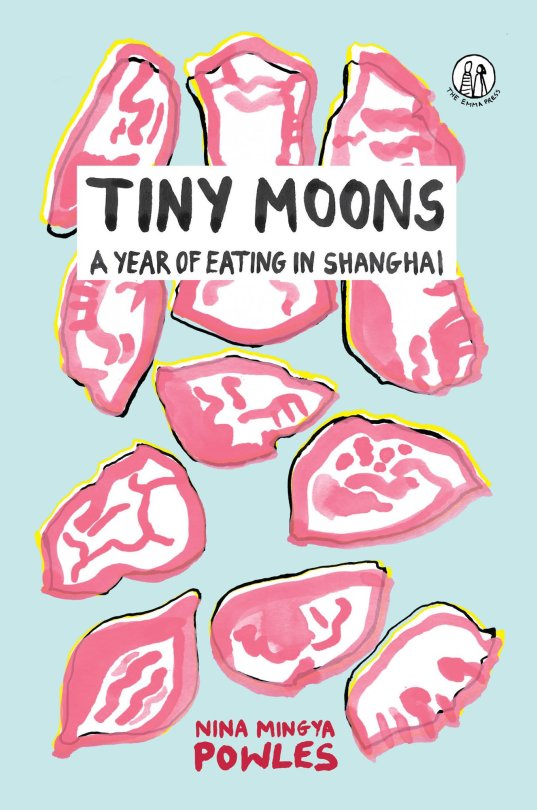
TINY MOONS: A YEAR OF EATING IN SHANGHAI BY NINA MINGYA POWLES
Published by The Emma Press
Tiny Moons is a beautiful collection of essays I savoured as the weather began to get warmer last year, missing the beautiful Asian cuisine I usually enjoy going out for in London.
Nina explores specific dishes, our relationship with food, her childhood and belonging throughout these essays, and though a short collection, I was desperate for it to never end.
It made me hungry, sad, and desperate to see more of the world. Her poetry collection, Magnolia, is high up on my TBR.
#boy parts#eliza clark#penned in the margins#abi palmer#sanatorium#influx press#the liar's dictionary#eley williams#william collins#nina mingya powels#tiny moons#the emma press#tbr#am reading
8 notes
·
View notes
Text
Getting to know me tag!
Thank you @chans-baby-girl for tagging me, this looks fun :)
1. When is your birthday?
May 11th
2. What is your favourite colour?
Pink, brown and grey
3. What is your lucky number?
13
4. How tall are you?
166cm, so 5'5?
5. How many pairs of shoes do you own?
I'm a sucker for shoes, I'd say about ten?
6. Favourite song(s)?
MOONSHOT by N.Flying, Cassette by DEMIAN, Jogging by LUCY, In My Room by SHINee, LMLY by Jackson Wang, RED by The Rose, Moon by BTS, Would You Mind by PRETTYMUCH, RED BLACK by Kazuo
(I'll try remember to add my spotify to my linktree there are too many)
7. Favourite movie?
Howl's Moving Castle all the way that hits different every time and I have the fattest crush on Howl
8. What would be your ideal partner?
I actually was thinking about this a couple nights ago.
So, LOOKS wise, I tend to like short boys who look like a gust of winf would blow them away, or girls who could crush my head between their thighs without breaking a sweat. Androgynous people are just always hot, I am yet to meet a not hot androgynous person. But that may just be gender envy who knows.
PERSONALITY wise, i find it really attractive when the person is incredibly book-smart. Like intelligent and nerdy. All my previous crushes have been on massive nerds who would go off about their interests. I love it. Also its just kinda how when they just, /know/, so many things. I cant explain it, but it makes me blush and gives me butterflies. Also please hold my hand, and make eyecontact with me. Because those two things will make me fall in love with you. gnfgn I wrote so much omg
9. Do you want children?
NO
10. Have you gotten in trouble with the law?
Uh...I mean I've never gotten CAUGHT. So no. I have not.
11. What colour socks are you wearing?
I'm actually wearing obnoxiously yellow Hufflepuff socks a friend got me a couple years back
12. Bath or shower?
It depends. If I need to give a concert, shower. But if I need to wallow in self pity, bath.
13. Favourite kinds of music?
Rap but specifically London rap, Kpop, songs you would run through a flower field to, songs you would throw it back to, songs that make me feel hot, I also really like classical music BBC's Classic FM is one of my most listened to stations.
14. How many pillows do you sleep with?
I currently have nine on my bed, three big plushes, and several smaller plushies. I need a body pillow.
15. What position do you sleep in?
I am the big spoon to my massive RJ plushie. So on my side like I'm holding someone. Except I'm not its an RJ plushie ;')
16. What don't you like while sleeping?
Light and silence
17. What do you usually eat for breakfast?
I usually don't eat breakfast, but if I do then some spicy rice thing.
18. Have you ever tried archery?
no
19. What are your favourite fruits?
Kiwifruit and mandarins. Frozen blueberries. ALL MANGO. Dried strawberries.
20. Favourite swear word?
Idk when I'm put on the spot I usually swear like "Oh bloody hell" or "shitting hell" or "twat", but in conversation 'fucking' is a pretty good adjective.
21. Do you have any scars?
Too many. Some couldn't have been prevented, but some ought to have been.
22. Are you a good liar?
A frighteningly good liar.
23. What is your personality type?
ISTP-A
24. What is your favourite type of girl?
A girl who takes up her space.
25. Left or right handed?
Cross-dominance. So, I write with my right, but thats only because I was told to. Everything else I have no preference.
26. Favourite food?
Tteokbokki or gnocci.
27. Are you clean or messy?
Very clean.
28. Favourite foreign food?
Thai. 100%. That shit BUSSIN
29. How llong does it take you to get ready?
On a normal day when I have classes then about half a hour, but if I'm going out then an hour and a half.
30. Most used phrase?
"Darling" (I call people pet names, but 'darling' has become a 'thing'
"Mais je ne veux pas" (Usually to my mother)
"Can you please not"
"Oh how exciting" (sometimes sarcastic, sometimes genuine)
31. Are you a good singer?
I can sing both parts to Tightrope from The Greatest Showman really well. My vocal range is closest to Sia's I think, with the super deep and very high. SO yes.
32. Do I sing to myself?
All the time
33. Biggest fear?
That I'll regret it
34. Do you like long or short hair?
I currently have a what I like to call 'Kpop Mullet'. So short.
35. Are you into gossip?
Yes and no, I always know everything, but I never pass it on. I just know and keep my mouth shut.
36. Introvert or extrovert?
Introvert
37. Favourote school subject?
Science, French, Chinese, Fashion
38. What makes you nervous?
Noise
39. Who was your first real crush?
This guy when I was 12. We were in the same class, and we liked eachother, We 'got together' on a school trip to China, and held hands on the Huangpu River cruise in Shanghai, and we actually went out for eight months. It dosnt seem very long now, but it felt like a passionate whirlwind of romance to my tiny 12-year-old-self. We went on movie and shopping dates. We did good morning and goodnight texts. We said 'I love you' and really ment it. He was my comfort person and I still feel bittersweet thinking about him. I'd like to have that support now.
40. How many piercings do you have?
Two, my lobes. I only have so little because I have no time for healing because I swim so much. I usually wear clip-ons or cuffs. I want to get my tongue done.
41. How fast can you run?
I don't run
42. What makes you angry?
The first thing that comes to mind is the patriarchy and all the horror it encourages, and my second thought is when you can hear electricity.
43. Do you like your own name?
My parents sat me down and told me it would be fine of I change it. Unprompted. Make what you want of that.
44. What are your weaknesses?
I'm almost always over or under stimulated.
45. What are your strengths?
I am suuuper confident with who I am and how I act, and that makes day-to-day life really easy. It may sometimes be faked, but we're all here to put on a show.
46. What colour is your beadspread?
Light blue with flowers.
47. What colour is your room?
We have white walls, but I have cob=vered them in my art and pictures. Like its a massive collage, my ceiling too.
Thank you Dayzee this was so much fun! I hope you learnt about me ;)
0 notes
Text
女 (woman, feminine): I see a curved standstill / a breath being held in /
It is tiring to be a woman who loves to eat in a society where hunger is something not to be satisfied but controlled. Where a long history of female hunger is associated with shame and madness. The body must be punished for every misstep; for every “indulgence” the balance of control must be restored. To enjoy food as a young woman, to opt out every day from the guilt expected of me, is a radical act, of love. My body often feels like it’s neither here nor there. Too much like this, not enough like that. But however it looks, my body allows me to feel hunger.
—Nina Mingya Powles, Tiny Moons: A Year of Eating in Shanghai
28 notes
·
View notes
Photo
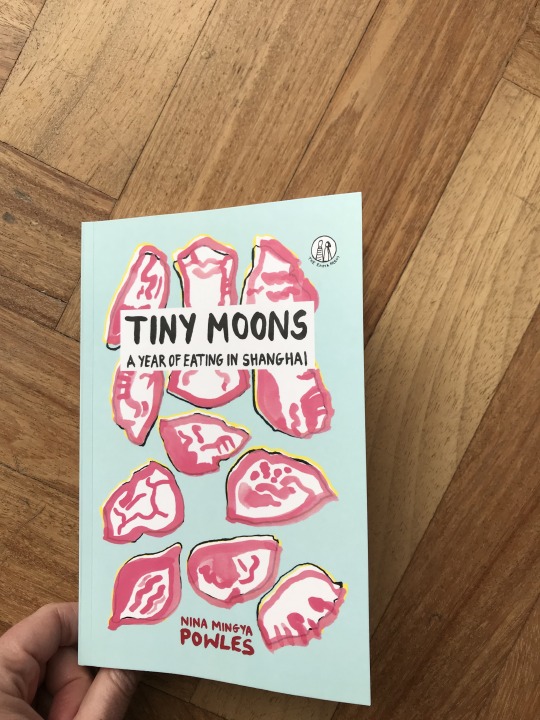
My 2020 books: Tiny Moons by Nina Mingya Powles This is a lovely heartfelt exploration of living abroad and exploring the abroad’s food with your interwoven pre-existing memory of places and food and comfort. The author speaks about her one year in Shanghai, telling everyday or rather seasonal stories along the lines of dishes. It, of course, propelled me back to my HK times, but also to travelling to and eating in China and Malaysia, and I felt the humidity. And there’s a subtext (not always sub) about women in Asia, and expected body sizes and behaviours of Asian women, and the (emotional) implications of passing as not-Asian/white despite having mixed heritage backgrounds.
0 notes
Text
Update 5
(Note: As usual, time has passed between writing this and being able to post it! Today is our 5th day in China, so this post is 5 days old!) Mat here, aboard the ferry to Shanghai! We are feeling sad to have left Japan, the 3 weeks here have flown by! But we have loved it. Here's what we've been up to with our final days here. After leaving the Fuji area, we made our way to Komoro. We arrived at Komoro station where our host Yuu San collected us. He seemed quiet and cautious, but friendly. We drove out of the city and over the hills, into a beautiful area filled mainly with rice fields. Yuu San and his family run a book cafe, which was an incredibly tranquil room filled with art (all created by family friends) and many shelves of somewhat antique looking books. The place had such a nice relaxed feeling. It was helped by the cup of green tea and acoustic guitar Japanese singer/songwriter music that Yuu San played. After meeting Yuu San's wife, Megumi San, we had a tour of the place, noting some interesting musical instruments that we were allowed to play, and also seeing a huge loom that Megumi San creates big textile artworks with. It's a really lovely house. Our room was outside - the home-made building was made from mid and straw, with old Japanese tatami mats used for insulation! It was a nice, comfortable place, and nice to be outside and feel connected to nature. We joined Yuu San and his family for meals. Megumi San's cooking was amazing! We had all sorts of brilliant traditional Japanese food that was totally different to what we could find in the restaurants around Japan. They are big Beatles fans! Yuu San proudly told us about when he sang with Paul McCartney - leaving us in disbelief before adding that it was with tens of thousands of other people, at a Paul McCartney concert! After dinner he got out his guitar, which he let me play - it was so nice to play a guitar again after over a month without playing any music! Yuu San played and sang us his 'welcome song' - a version of John Lennon's 'Imagine', with each verse sung in a different language! They have had their guests from around the world contribute translations to help expand the song. It was really beautiful and quite moving! Megumi San is a textiles artist, and so they have many artist friends. The cafe is a nice, creative space, and they seem very keen to support creativity. One thing they like to do is arrange festivals with music and dancing - the biggest one they held had 700 people show up, just in their garden!! They have one in August, called the International Bon Dance Festival. In the past they've had guests help create adverts for the festival - they showed us some videos of previous adverts, before Yuu San quietly suggested, "Why don't you try to create a Bon Dance advertisement for us?" Challenge accepted! So outside our Tatami house was a big crazy looking wooden building. This was the Doraku Organ- the entire building is a musical instrument. It used to be in a city as an art installation, but heavy snow on the roof meant it couldn't stay, so it was transported to Yuu San's house. We had listened to a song that was written about the organ - at the festivals, they perform this song and everyone does a special dance to it! The organ contains many different ways to create funny sounds - most of which work like a pipe organ. It's really amazing, because you have to go inside this huge wooden sculpture to play it. The sounds are weird, and unlike any other musical instrument in the world! It was one of the coolest things I'd ever seen. We decided to make the Organ, and the song, part of our advert. The advert is on YouTube, here: https://youtu.be/Mc7zlM0_YgM Everyone was really happy with the advert, including us - we both really enjoyed coming up with ideas and making the video! It was a fun, weird, creative day. Aside from playing music, we explored the local area a bit. The family have a goat in their garden, who seemed pretty friendly! And we walked through the woods down to a nice lake. One evening we walked down with Yuu San and Megumi San's daughter, Mizuki, to see the family's rice fields, where they had spotted fireflies! Apparently there's only a couple of weeks in the year when you can see fireflies, so we felt very lucky to see them! It's really quite a beautiful site, it feels a bit like seeing fairies! Yuu San also encouraged us to go to the local Onsen (hot spring/public bath). We'd heard trying an Onsen is a good experience, but we're a bit nervous about it, because, well, everyone goes completely naked. No swimsuits allowed. Apparently the Japanese like this, because it is a great equaliser in society! I'd find it awkward enough in England where I understand the culture, but because there's a lot of rules and etiquette in Japan, it's even more scary! Still, we thought we should try it. We decided to walk to the Onsen, which was a nice walk through the rice fields, over some hills and through a tiny village tooked away in a valley. It was a nice walk, and it seemed we had earned our relaxing bath. We arrived at the Onsen, and said goodbye - for obvious reasons, the Onsen is gender separated. (Blue curtain for male, red for female, don't get that wrong!) It's easy enough, you get undressed, go to the washing area and shower off so you're clean, then you're free to enjoy the indoor bath or the outside bath. I spent my time in the outside bath, because, well, you can have an indoor bath anywhere... The water is very hot, and it is believed that the water contains lots of minerals that are good for your skin and for relaxation. The last thing I should mention about Yuu San's is the kittens. Oh my god the kittens. Their 1 year-old cat recently had kittens, one of which still lives with them. They are so damn cute! Then a friend who took another of the kittens home brought him round to see his family, so the 2 kittens spent ages wrestling on the table whilst their Mum watched. She was very protective, and extremely talkative, always meowing for attention. So that was our experience in Komoro! Next up was our final stop in Japan - Kyoto! Our first evening was a trip to the Hoon district, which has a street considered to be one of the most beautiful in all of Asia! From there we walked across to a ramen restaurant in the downtown area. It was Saturday night so the downtown area was rammed with people, it was almost as busy as some of the busiest parts of Tokyo! The next day we walked to a craft museum, which had lots of examples of and demonstrations of traditional Japanese crafts. Then we went to the Philosopher's Walk, a popular walking route near a river where university professors used to like walking for quiet reflection time! On the way we found a pottery shop where you could make your own pottery on a wheel - I convinced Libby to have a go, and she seemed like a natural! We walked through the university where Mizuki used to study- it seemed like a nice university building, but we passed the student halls and couldn't believe how crazy untidy and run down it was! No idea what the students had done to the place! And the building itself looked like some kind of prison camp, all in all the most un-japanese thing we saw on our trip! We then headed to the Yuu San family reccomended Beatles Bar - a beatles themed bar, which played Beatles music videos on a massive projector all evening! The next day we saw the world famous rock garden at Ryoku temple, a temple of zen buddhism. The garden consists of just white gravel, and 15 carefully placed rocks. Its been there about 1200 years and there is much speculation as to why it was built the way it was. It's a very beautiful, meditative space, as is the rest of the gardens that surround it. Then we headed to the Arashiyama district, a residential suburb with the famous bamboo forest, a really magical place with dense tall bamboo trees and fantastic colour, shame you spend most of your time trying to get out of the background of other people's photos! Theres also the famous moon crossing bridge and lots more parks and temples. We then went to see the Fushimi Inari Taisha. Inari shrines are dedicated to prosperity, and this is the grandest one in Japan. The animal spirit of inari shrines is a white fox, so there are fox statues everywhere guarding the shrines. It has 1000s of Inari gates, which help prayers reach the temple, so they line all the paths around the hills, which makes a really interesting spectacle of long bright red tunnels! We walked up to the top of the mountain passing many small shrines and really haunting graveyards, all lit by lanterns as it was early evening , passing through another bamboo forest before reaching the top of the mountain , partly overlooking the city . A lot of effort is made to look after the surrounding environment , particularly as Shintoism sees many aspects of nature as sacred - this gives the surrounding environment a real importance and I wonder how this affects how Japanese shintoists see the world around them. The next day we headed to Nara, a city where deer used to be sacred, so there are hundreds of deer roaming free in the huge park! You can buy crackers to feed them, and they seem used to knowing that humans = free food. Which makes them pretty tame, but big signs warn that they're wild animals which may kick, bite or push you over. Nonsense! Although they did try and eat both mine and Libby's clothes. Anyway, they're insanely cute. I gave most of my biscuits to a cute deer that seemed a bit shy and was hanging out by himself, I think he was grateful!There's also a huge ancient temple with an absolutely humongous golden Buddah inside, its hand is the size of a human being, really breathtaking! The next day we went to Kurama, a beautiful temple atop a mountain out in spectacular hills North of Kyoto. Feeling lazy from several days intense walking, we cheated and took the cable car up. An easy day, we spent a lot of time just relaxing and taking in the wonderful views. Theres lots of statues of a red face with a huge nose, it's a sort of evil spirit. One winter the nose of the biggest statue fell off, so the locals put a giant plaster on it! The train home had awesome comfy seats that faced the windows directly, so you can really enjoy the great scenery. Then for our last day in Japan (!!) we headed to the South Higashiyama area to see this area's very well preserved old architecture. It is also an area famous for having a lot of geisha houses. From there we walked up to Kiyomizudera temple, which was a beautiful old temple with great views of the city. Many of the Japanese visitors wear traditional Kimonos to visit the area, including wooden shoes that make a very satisfying sound but I imagine must be pretty uncomfortable! One last ramen (a really good on too, with a veggie option and everything), one last sake, and that was it, our time in Japan was up! It's hard to sum up 3 weeks in Japan, but in short, it's been a wonderful time. The people here are so nice and welcoming, the cities are amazing, the scenery incredible, the food delicious, the roller coasters massive... It's just a wonderful place and I'm so pleased to have had the chance to come here! This ferry is a ghost town, I think there's about 10 passengers on board! No idea why, but it's very relaxing! Shanghaï here we come!
1 note
·
View note
Quote
I stop to get a soft-serve ice cream and a box of strawberries so ripe they fall apart when I put them in my mouth. I run my fingers through my hair and flower stamens from the trees float to the floor. I lie on my bed in the afternoon when everything is slow and warm, my curtains billowing in the wind, making shapes in the soft light.
Nina Mingya Powles, Tiny Moons: A Year of Eating in Shanghai
53 notes
·
View notes
Text
Hangzhou, Surrounded By Green Tea Fields, Is Also China's Silicon Valley
New Post has been published on https://www.furilia.com/hangzhou-surrounded-by-green-tea-fields-is-also-chinas-silicon-valley/
Hangzhou, Surrounded By Green Tea Fields, Is Also China's Silicon Valley
Hangzhou, a two-hour drive southwest of Shanghai, is one of the main destinations in the Yangtze River Delta, a historically fertile region. Here, communities have built their entire livelihoods upon the ebb and the flow of the waterway. The city’s crown jewel is the West Lake, a glassy body of water that has been the inspiration of poets and scholars for centuries. It was once surrounded by idyllic family farms, sleepy pagodas, and rickety fishing boats. Bo Juyi, a Tang Dynasty poet and government official, once wrote of the area:
Now spring is here the lake seems a painted picture
unruly peaks all round the edge, the water spread out flat
Pines in ranks on the face of the hills, a thousand layers of green
The moon centred on the heart of the waves, just one pearl.
Thread ends of an emerald-green rug, the extruding paddy-shoots
Sash of a blue damask skirt, the expanse of new reeds.
If I cannot bring myself yet to put Hangzhou behind me,
Half of what holds me here is on this lake.
A view of West Lake
Photo by Clarissa Wei
Surrounded by fields of green tea, it was once the capital of the former Song Dynasty, a golden age of tea in China, where the beverage was such a cornerstone of society that nobles and scholars would hold tea parties in the hills. In these parties, tea sets would be packed in wooden baskets, brought up to a vantage point, and folks would draw water from the nearby streams and heat it up for their infusions. And then there were tea battles, where people would put powdered tea in a bowl, agitate it with a bamboo whisk until fine froth emerged in the cup, and judge each other on the results. This became a wide source of entertainment and debate. A good cup was one where the color was kept fresh, the foam was white, and the surface was even. This, after all, is where the Japanese got matcha from.
With all this in mind, when I visited Hangzhou, I expected to be greeted by towering pagodas on a quiet lake and rows of green tea bushes, flanked by idyllic tea houses and spring water bursting from the mountains. I expected tea to be on nearly every block. I expected tranquility and poetry, trickling down freely on the streets.
The tea fields of Longjing
Photo by Clarissa Wei
Instead, I was met with a bustling cluster of skyscrapers and roaring traffic. There was a brand new subway system and I found myself oddly captivated with the underground vending machine that squeezed out fresh orange juice from real oranges. I also spent many hours perusing and testing out the food delivery apps available in the city. There wasn’t a single tea bush in sight.
Turns out I was just looking at the wrong spots. Tea plantations exist, just tucked away in the hills of the West Lake, and in Longjing, a village on the southeast side of the city, I visited the Hangzhou National Tea Museum, the only museum in the country dedicated to the beverage; it has its own tea plantation and a research center. Longjing is also home to 18 tea trees planted by a Qianlong Emperor who visited the area in the 18th century and fell in love with the tea. These nearly 300-year-old imperial tributes are icons, well-protected by a stone fence and surrounded by a park.
Longjing green tea retails as high as $145.
Photo by Clarissa Wei
Today, Longjing produces some of the most expensive green teas in the country. Five hundred grams of tea picked in the early spring, when the leaves are most tender, can retail for as much as $145 USD. Longjing, which translates to “dragon well,” is named after an actual well in the village where, according to legend, lives a subterranean dragon that can access the sea. The water within is said to contain magical properties. You can take a sip or rub it on your face; locals say it can cure nearly any ailment. Green tea from Longjing is made exclusively from young buds harvested in early spring and gently pan-roasted by tea farmers, which gives it its signature nutty aroma.
“Longjing tea has always been a part of my life,” Amy Duan, a Hangzhou native who is behind TheChihuo.com, Los Angeles’ biggest Chinese food blog, says. “I never gave much thought to it when I lived there because it was such a normal part of our day-to-day life and because we always had it at our house.”
“[It] is a microcosm for China, a place that’s growing so quickly it barely has time to acknowledge its history. ”
Share
The truth of the matter: While Hangzhou was historically the stuff of poetry, teeming with gorgeous waterways and wildlife, today, it’s home to new wave of romantics. But instead of writing verse, they’re composing code (hence the spectacular number of delivery apps in the city). It is the Silicon Valley of China. It is the home of Alibaba, China’s answer to eBay, and in recent years, a bevy of startups have opened up around the e-commerce giant, all vying to be the next big concept.
I had met up with an acquaintance there who works in the startup industry. He took me to his co-working space in the city, similar to the ones in the States, where different companies and freelancers can rent out space in a building. The biggest difference was that the lobby had a Chinese tea bar, where a server would pour out drinks for employees in traditional Chinese tea cups. Longjing green tea, of course, was on the menu.
Left: Dong po pork; Right: river shrimp
Photos by Clarissa Wei
While energy of the city may lie in modernity, the taste buds of the city are still deeply rooted in tradition. Nearly all the restaurants in Hangzhou offer Longjing green tea, and many feature a dish called longjing xia, which is tiny river shrimp doused in tea water and decorated with bright green tea leaves.
Others have gone so far as to dedicate entire restaurants to the local tea. There’s a restaurant chain called Green Tea that has a massive menu of all things tea. They do a marvelous duck and pork smoked with tea, as well as bread and beer flavored with the tea leaf. Broadly speaking, the cuisine of Hangzhou reflects the seasons and what is available in the land. In the spring, tender bamboo shoots are a mainstay. Lotus, which grows on water, is harvested often for its starchy roots.
Duck and pork smoked with tea
Photo by Clarissa Wei
Many dishes come with backstories. Dong po pork, Duan says, is one of her personal favorites. It’s a cubed piece of pork belly slow-cooked in a soy-based sauce until it turns a crimson red. It is named after a Chinese poet and scholar by the name of Dongpo. “Hangzhou has a lot of rivers and creeks and alongside these waterways, they will grow a lot of special vegetables. A lot of our fish comes from these rivers as well, where they are cooked gently in order to let their individual flavors shine,” she says.
The most emblematic dish of the city is a river carp called xi hu cu yu, or West Lake vinegar fish, which is gently steamed with vinegar and ginger. A notable rendition is served at a famous restaurant by the lake called Lou Wai Lou, one of the most celebrated dining spots in Hangzhou, with a history of over 150 years. There, a little girl had approached me and my friend as we were eating. It was towards the end of dinner service, and we were one of the few people left in the restaurant.
West Lake vinegar fish
Photo by Clarissa Wei
“Hello. Are you zhongguoren?” she said, verbatim, smiling up at us. Zhongguoren means Chinese person in Mandarin. Her hands were in her pocket, and she stared up at us, wide-eyed. The waitresses, visibly amused, all stopped what they were doing to watch the scene unfold.
“Hi! Yes and no. I’m from America, but I am also from here, kind of,” I responded back in Mandarin.
She told me she had heard my friend and I speaking English and wanted to converse with us with the little English that she knew. We asked her how old she was; she was just 11.
“I love America!” she concluded, at the end of our conversation. “One day I want to visit.”
Inside a chain restaurant called Green Tea
Photo by Clarissa Wei
That interaction summed up the polarity of city: It’s entirely Chinese, but with the deep aspiration to become a city with Western characteristics. And as my friend and I left the restaurant to hail a taxi, I couldn’t help but notice a Starbucks on the same street. Hangzhou is but a microcosm for China, a place where growth means more concrete and taller buildings, a place that’s growing so quickly it barely has time to acknowledge its history.
Food and tea are one of the few mediums left where the city’s romantic past is diligently and consistently acknowledged.
Playing a guzheng
Photo by Clarissa Wei
One snowy day, I was invited to a private gathering on the top floor of a hotel that overlooked the edges of the West Lake. There, my friends plucked the strings of a guzheng (a Chinese piano) and tried our hands at calligraphy. There was a tea table at the center of the room and as we dabbled in the arts and chatted, the staff taught us how to pour a proper cup of Longjing tea. Every tea, they told me, has its own specific ritual to match it.
The directions for Longjing tea were simple: Add the dried tea leaves into a long, tall glass and pour hot water in.
See the tea leaves dance!
Photo by Clarissa Wei
“That’s it?” I asked. I was expecting a more complicated ceremony, like that of oolong tea and pu-erh, which uses small teapots and teacups.
“Yes,” a staff member responded, smiling. “The clear glass allows you to fully appreciate the visuals of the leaves as they unfurl. And this way, they’ll have the space to dance.”
This article originally ran in July. We’re running it again because Hangzhou looks so beautiful in the snow.
Tags:
green tea, hangzhou, china
💬 View Comments () Share this Article Tweet this Article
// note: sdk init now in f52.fb.js
(function(d, s, id) var js, fjs = d.getElementsByTagName(s)[0]; if (d.getElementById(id)) return; js = d.createElement(s); js.id = id; js.src = "http://connect.facebook.net/en_US/sdk.js"; fjs.parentNode.insertBefore(js, fjs); (document, 'script', 'facebook-jssdk'));
(function() (window._fbq = []); if (!_fbq.loaded)
var fbds = document.createElement('script'); fbds.async = true; fbds.src = "http://connect.facebook.net/en_US/fbds.js"; var s = document.getElementsByTagName('script')[0]; s.parentNode.insertBefore(fbds, s); _fbq.loaded = true; _fbq.push(['addPixelId', '237676769763423']); )(); window._fbq = window._fbq || []; window._fbq.push(['track', 'PixelInitialized', ]);
Source link
0 notes
Text
New Post has been published on Bestnewsmag
New Post has been published on https://bestnewsmag.com/this-chinese-birds-a-beauty/
This Chinese bird's a beauty
Last Friday, I found out even bird’s newshounds, who are presupposed to be dispassionate and goal while on responsibility Chinese, Beauty
ought to get carried away by using feelings. An overwhelming emotion and a sense of satisfaction overcame me when I witnessed the momentous takeoff of China’s first homemade big passenger plane, the C919, for its first test flight.
It’s pretty much a yr given that I began covering the aviation industry as a reporter. When I began submitting my reviews, I changed into already a frequent flier but didn’t know a whole lot approximately the enterprise terminology. Perhaps, it is comprehensible for a female in her 20s?
Within some weeks, I started out to music COMAC, the maker of the C919, carefully. The more I learned approximately the organization and its achievements, the more I located aviation captivating. That spurred me to write down numerous testimonies on the industry, including a few at the viable time of the C919’s first flight.
In a feel, the suspense changed into building all of the whites, and Friday becomes denouement time. The Shanghai sky changed into overcast and the air a bit smoggy, spiked with a chilly wind. But none of that mattered simply.
The glowing, inexperienced-and-blue striped C919 rolled out directly to the tarmac and parked quietly at Shanghai Pudong International Airport. This fowl-what a splendor! Excitement erupted among the extra than three,000 spectators who were waiting with bated breath for the C919’s much-expected maiden flight.
I noticed authorities officers, business executives, teachers associated with COMAC, reporters, and others among the large crowd. Everyone was taking pics and videos with their cellular phones. As the C919 expanded at the runaway, gained momentum with every 2d, and zoomed into the skies in a picture-perfect takeoff, all people, inclusive of me, cheered and screamed.
As the plane disappeared from my sight inside seconds, a flurry of mind and emotions stuffed my thoughts. The C919, I found out, is a symbol of China’s business, manufacturing and ensemble tech prowess. Perhaps, it’s pleasure of now not simply China but Asia, the East as an entire. Not many emerging markets boast such abilties-in spite of everything, commercial passenger jet manufacturer has been the preserve of Boeing and Airbus for goodbye.
To make sure, COMAC’s passenger jet task nevertheless has an extended manner to head. For one, the C919 needs to be certified as airworthy through the regulator worried. For any other, stiff marketplace competition awaits the new aircraft it has to prove itself to be a secure, efficient and reliable plane.
Even as such thoughts raced through my thoughts, time-about 80 minutes-flew quick too. The C919 lower back from its successful test flight and landed thoroughly. It taxied closer to the spectators and halted in front of them. Everyone became standing on the chairs, trying to be taller than the relaxation so that you can seize better images.
I found out I wasn’t the only journalist who was excited and emotional. An elated Wang Yanan, editor-in-leader of Aerospace Knowledge mag, shared his imaginative and prescient for the destiny: “The Chinese aviation enterprise will probably develop from a production large to an innovation energy.
Why Does Chinese New Year Fall on a Different Date Each Year?
I’m sure you’ve noticed that Chinese New Year falls on a
different day each year.
Why is this so?
I asked myself the same question and finally I figured it
out.
Spring begins (立春, lìchūn) each year around Feb 4th (in
the Western calendar).
The first day of Chinese New Year starts on the New Moon
closest to spring.
(That’s why Chinese New Year is called the Spring
Festival.)
And ends on the Full Moon 15 days later with the Lantern
Festival.
The first day of Chinese New Year is always between Jan 21st
and Feb 21st.
But why are Chinese New Year dates so “unpredictable”?
To answer this question, one has to look at how a month in
the Chinese calendar or lunar calendar is calculated.
A Chinese month yue4 月 which means “moon” is a REAL moon.
Each lunar month starts on the day of the new moon.
This is the day the moon is closest to the sun and not
visible at all.
Does it mean that one has to look at the sky each time to
tell the new moon?
Fortunately, the answer is “no”.
Otherwise there’ll be a lot of stiff necks!
Because the new moon occurs with enough regularity to devise
a calendar based on its phases.
(Full moon in the middle of the month. Moon wanes at the end
of the month).
On average, each lunar month is 29.5 days.
(Sometimes the months are 29 days and other times they are
30 days.)
But multiplying 29.5 days by 12 months gives 354 days.
Which is 11 days short of 365 1/4 days, the cycle of the
four seasons.
Or 11 days “faster” if you like.
So, how does the Chinese calendar “wait” for the natural
world to catch up?
By adding an extra month to make a “thirteen-month year”.
Well, not every year but every few years.
How often? It turns out seven times every nineteen years.
In this way, the Chinese calendar year keeps in step with
the real world.
Each year in the Chinese Calendar is also named after one of
12 animals of the Chinese Zodiac.
Last year, 2005 was the year of the rooster and 2006 the
year of the dog.
Chinese New Year dates from the year 1900 to 2019 you can
use to tell which is your animal sign.
It’s a “cool” system because you won’t have to remember
how old you are.
You’ll just have to know which animal year you w
What Do Birds Drink When Everything Is Frozen?
There are few things lovelier than a fresh blanket of snow and frozen ponds. Looks like a winter wonderland and very picturesque. Perhaps after you have enjoyed the view for awhile your mind may have turned to the furry critters who have to live outdoors on these cold days. And maybe you have asked the question, what are all the animals going to drink if everything is frozen? Do they eat snow? We know humans can freeze to death if they eat snow, so what about birds? The answer is yes, they can eat snow. But it takes a lot more energy for them to thaw the snow, and for their bodies to bring the freezing temperatures of the snow to their body temperature, than if they were to drink water that is not frozen. Water is just as crucial for animals as it is for humans. Actually starvation (which is always a concern for birds) can be less of a threat than dehydration. Birds often get their water supply from melting icicles, and puddles. When it is severely cold and there is no water to drink, they do eat snow.
But refrain from running outside and placing bowls of warm water out for your feathered friends. Though not common, birds have been known to bathe in warm water when it was very cold outside. And resulted in their feathers getting coated in ice and were unable to fly. Heated bird baths are a wonderful source of water for birds in freezing weather. But be sure to put rocks or sticks across the top of your to prevent them from bathing.
Water is especially important for birds to stay warm in the winter. Because water helps birds keep their feathers preened. Preened feathers are important to birds because it keeps feathers properly positioned and aligned. If they are not in alignment, the cold can seep in the gaps of their insulation. Which causes them to lose their body heat faster. When there is no water to bathe in the birds will take snow baths. This helps preening and fluff up their feathers to make a insulating layer. Each feather is controlled by a small group of muscles. When birds fluff their feathers, they create many tiny air pockets that drastically reduce heat loss. This is why down coats are so cozy in the cold. On cold nights birds bury their beaks and feet into their feathers, which helps reduce heat loss further.
Winter is lovely, but can be a trying time for the animals who live out in it. You can help alleviate their hardships by providing a reliable water source. And don’t be fooled with the old myth that if you start feeding and providing water for the birds they will starve if you stop. Nonsense! They will no more die of thirst or hunger than you will if you favorite restaurant goes out of town! You may be miffed but you certainly wouldn’t die! Providing a haven for your feathered friends with bird feeders and heated bird baths will not only help the themout, but in return, birds are so fun to watch. And will offer you many hours of amusement and entertainment.
Hi, my name is Cassidy Frost. Outdoors and animals are my passion! I am a married, full time mother of 3 children, an avid runner, mountain climber, world traveler, and gardener. When my children all got into school my fingers started itching to find something constructive and fulfilling to do. So I decided to turn my passion into a job
0 notes
Note
One of my reading goals for this year is to read more essay collections, and I was wondering if you had any recommendations?
of course <3
ways of seeing, john berger
a field guide to getting lost, rebecca solnit
non-required reading, wislawa szymborska tr. clare cavanagh
azadi, arundhati roy
too much and not the mood, durga chew-bose
also from my tbr:
six memos for the next millennium, italo calvino
madness, rack and honey, mary ruefle
tiny moons: a year of eating in shanghai, nina mingya powles
ghosts of my life, mark fisher
an inventory of losses, judith schalansky
the little virtues, natalia ginzburg tr. dick davis
#tbr has so many essay collections now that ive looked at it ummm#also ofc u can go thru my ref tags for more rec posts#ref#ref: mine#book recs#asks
65 notes
·
View notes
Text
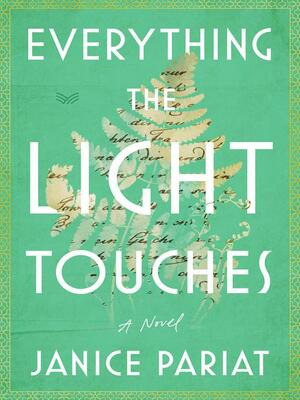
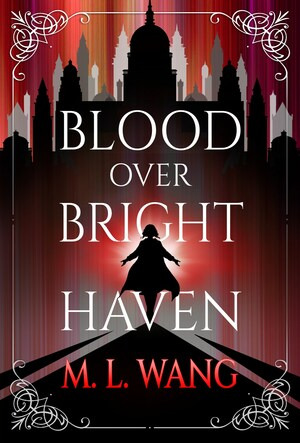
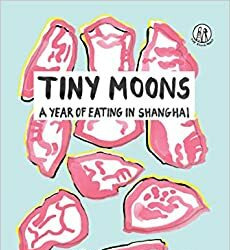
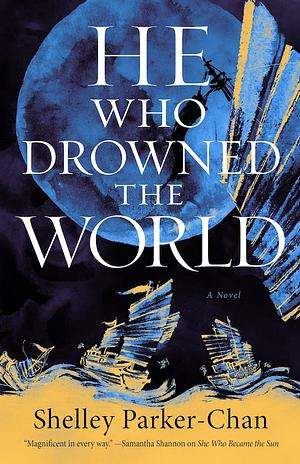


tagged by @librarycards to post my quarterly reads <33 what a great few months for reading actually I'm excited 2 share these !
everything the light touches—janice pariat
blood over bright haven—m. l. wang
tiny moons: a year of eating in shanghai—nina mingya powles
he who drowned the world—shelley-parker chan
skylark—deszo kosztolányi tr. richard aczel
greek lessons—han kang tr. deborah smith & emily yae won
tagging: @commajade @oldyears @powm @feuillesmortes @pureheroine2013 @ch4momile 🫶🏾
26 notes
·
View notes